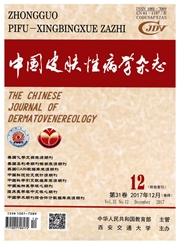

 中文摘要:
中文摘要:
目的建立多重PCR体系并探讨其用于深部真菌感染诊断的可行性。方法用真菌通用引物内转录间区(ITS)联合曲霉属、镰刀菌属、毛孢子菌属、白念珠菌、新生隐球菌特异性引物建立多重PCR体系,用单重和四重PCR检测模拟体液和30例可疑深部真菌感染患者临床标本中的真菌。结果ITS可与5对属或种特异性引物任意组合(二重PCR),四重PCR组合为ITS+毛孢子菌属+白念珠菌+新生隐球菌。30例临床标本中,真菌培养、PCR检测的阳性率分别为26.67%和43.33%,两种方法的检出率差异无统计学意义(P〉0.05)。结论单重和四重PCR敏感性高、稳定性好、操作简单、耗时短,可为深部真菌感染的早期诊断提供病原学依据。
 英文摘要:
英文摘要:
Objective To establish a multiplex PCR assay and then to study its feasibility in the diagnosis of deep- seated fungal infections. Methods A multiplex PCR was developed using universal fungus-specific prim- ers-internal transcribed spacer (ITS) and 5 genus/species-specific primers for AspergiUus, Fusarium, Tri- chosporon, Candida albicans and Cryptococcus neoformans primers. The simplex and quadruple PCR assays were used to detect the fungi in the simulated body fluid and 30 clinical specimens of suspected deep-seat- ed fungal infections. Results The duplex PCR was established by random combination of ITS and other primers ,while the quadruple PCR was only developed using ITS and Trichosporon, Candida albicans, and Cryptococcus neoformans primers. Of the 30 clinical samples, the detection rates of fungal culture and PCR assay were 26.67% and 43.33 % respectively, and the statistical difference was insignificant between them (P 〉 0.05 ). Conclusion The simplex and quadruple PCR assays are sensitive, specific, simple and rap- id, which can provide the pathogenic evidence for the early diagnosis of deep-seated funzal infections.
 同期刊论文项目
同期刊论文项目
 同项目期刊论文
同项目期刊论文
 期刊信息
期刊信息
